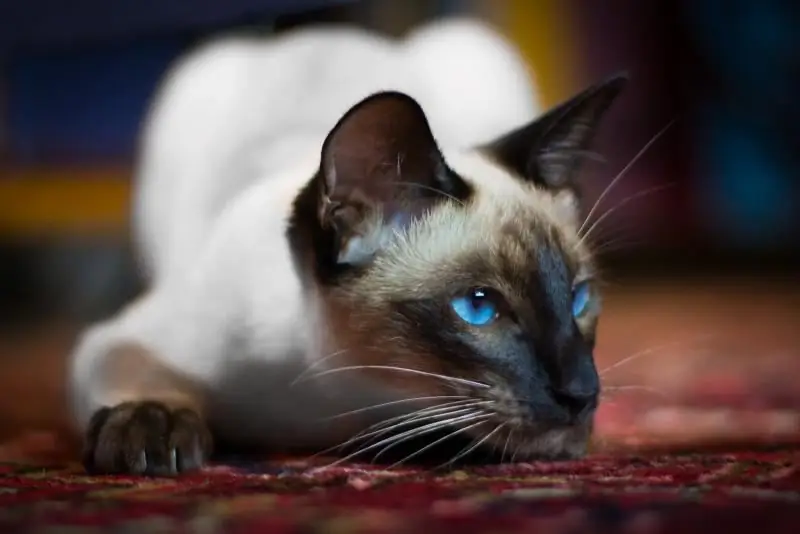
Table of contents:
- Siamese cat: history of the breed, characteristics, care and breeding
- History of the origin of the breed
- External features of Siamese cats
- What is the difference between Siamese and Thai cats
- Character and behavior of Siamese cats
- What diseases do Siamese cats most often suffer from?
- How to choose a Siamese kitten
- How to care for Siamese cats
- Sex life and breeding
- Reviews of the owners about the breed
- Author Bailey Albertson [email protected].
- Public 2024-01-17 22:26.
- Last modified 2025-06-01 07:32.
Siamese cat: history of the breed, characteristics, care and breeding

Siamese cats have a characteristic wedge-shaped head, a small light body, refined grace and developed intelligence. And all this is in a special color of acromelanism - incomplete albinism, when the hair on the animal's body is painted in bluish, purple and cream tones, and there are dark areas on the head, tail and paws. Thanks to this color scheme, you will surely recognize the Siamese cat. In addition, Siamese are amazing for their history.
Content
-
1 History of the origin of the breed
1.1 BBC TV show about Siamese cats (video)
-
2 External features of Siamese cats
- 2.1 Specificity of the colors of the Siamese cat (photo gallery)
- 2.2 Representatives of the Siamese-oriental group (photo gallery)
- 3 What is the difference between Siamese and Thai cats
-
4 Character and behavior of Siamese cats
- 4.1 Positive qualities and disadvantages of the breed
- 4.2 Siam and surroundings
- 5 What diseases do Siamese cats most often suffer from?
- 6 How to choose a Siamese kitten
-
7 How to care for Siamese cats
- 7.1 Hygiene: bathing, brushing, clipping nails, cleaning ears and teeth
- 7.2 Features of the organization of the toilet
- 7.3 Features of catering
-
8 Sex life and breeding
8.1 Castration and sterilization
- 9 Host reviews about the breed
History of the origin of the breed
Siamese cats are an indigenous breed of Southeast Asia, especially popular in Thailand. Actually, the former name of Thailand is the Kingdom of Siam, from whose name the name of the breed originated.
Today you can also find such a breed as the Thai cat. To avoid confusion, it is worth explaining right away: modern Thai and Siamese cats have the same roots, however, breeders "worked" more thoroughly on Siamese, and the Thai cat looks approximately the same as its "wild" ancestors hundreds of years ago.

Photo from Rose Tenent's The Book of the Siamese Cat, first half of the 20th century
In Thailand, Siamese cats were considered sacred animals, they were protected by law and often lived at temples, taking part in various ritual activities. Siamese cats were also revered in the monasteries of Tibet, where they had an almost black color from the colder climate and, according to legends, treasuries were protected.
The Siamese first came to Europe at the end of the 19th century, thanks to British colonial policy - British diplomats took out several of these animals, having received them as a gift from Siamese officials. The Siamese cat came to Russia as a personal gift to Nicholas II from the King of Siam Chulalongkorn. Then 200 animals of the original phenotype were brought to St. Petersburg, which formed the basis of the Russian population.

On the right - the old-type exterior of the Siamese cat, now called Thai, on the left - the modern exterior of the Liliac-point Siamese cat
The breeding of Siamese cats began in Britain. In 1902, the first breed standard was approved. British breeders have identified and enhanced such animal features as large ears, wedge-shaped head, thin long legs. These traits crystallized already in the USA, where a new breed standard was adopted in the 50s.
Experts today distinguish about 40 varieties of Siamese cats.
BBC broadcast about Siamese cats (video)
External features of Siamese cats
Modern Siamese cats have a rather characteristic appearance, the most noticeable details of which are almond-shaped blue eyes, large, erect ears, the tips of which conditionally create a regular triangle with the nose. The Siamese are also characterized by a long, thin tail and a rather powerful, but graceful body, covered with short, tight-fitting silky hair without an undercoat. Animals weigh on average from 3 to 8 kg, height at the withers reaches 30 cm.
Coloring is another characteristic of Siamese cats. Although experts distinguish many types of Siamese color, a kind of "mask" on the face, the color of the ears, tail and limbs remain unchanged - they are always dark in comparison with other parts of the body. This is caused by the difference in skin temperature - at extreme points, its value is usually lower, as a result of which the wool in these places has a higher content of dark pigment.
Siamese kittens at the time of birth are completely white, and their characteristic darkening of the coat appears after some time. They acquire their final color only at the same time as puberty. This is a manifestation of acromelanism, incomplete albinism, which is associated with temperature conditions. The dark areas are called points, and the specific colors of the Siamese are called color-points, the variations of which are many: strength, blue, liliac, tabby, chocolate, etc.
The specifics of the colors of the Siamese cat (photo gallery)
-

Siamese cat liliac-point -
Lilac point: body color - icy white with a pinkish tinge
-

Seal point siamese cat - The "royal" color is considered a seal point: dark brown (black) markings with a beige body
-

Blue tabby point siamese cat - Blue point: body color - bluish-white, cold tone; tabby - characteristic striping
-

Siamese cat, chocolate point - Chocolate point: body color - ivory
There are also related breeds with a characteristic color, blue eyes, but different body proportions, features of the coat, the outlines of the muzzles and other "cosmetic" differences (Balinese, Oriental, Peterbald, Slim cat, Thai, etc.). Common features of representatives of the Siamese-oriental group:
- flexible, graceful body;
- almond-shaped eyes;
- whip-shaped tail;
- large ears;
- wedge-shaped muzzle;
- good health;
- friendliness and talkativeness.
Representatives of the Siamese-oriental group (photo gallery)
-

Oriental shorthair cat - Oriental is a cat breed officially recognized in 1977 in America
-

Oriental longhair cat - Breeders, by analogy with the Javanese and Balinese, introduced the gene for longhair (Longhair) into the oriental cat breed
-

Peterbald - Peterbald or St. Petersburg Sphynx is a breed of Russian hairless domestic cats, obtained in 1994, in St. Petersburg, Russia, as a result of experimental mating of the Don Sphynx Afinogen Myth and an oriental cat, World Champion Radma von Jagerhof
-

Tonkin cat - Tonkin cat or tonkinesis - a hybrid of Siamese and Burmese cats of the American type
-

Thai cat - The Thai cat is an old-style conformation of the Siamese cat, approved as a separate breed in 1990
-

Siamese cat, European - Siamese cat - the ancestor and the most popular representative of the Siamese-oriental group
-

Mekong Bobtail - The Mekong Bobtail is a hybrid breed bred in St. Petersburg, finally recognized in August 2004 in Essen, Germany, at the WCF General Assembly
-

Seychelles longhair cat - Seychelles Long-haired, or Balinese bicolor - an experimental breed of long-haired oriental cats with a color like the Teretsk Van or Harlequin, bred by English breeders at the end of the 20th century
-

Seychelles shorthair cat - Seychelles Shorthair cat or Siamese colorpoint - a breed that bears great resemblance to Oriental, Siamese and Balinese cats, bred by British breeders
-

Foreign white - Foreign White is a breed of white cats with excellent hearing, bred in 1964 in the UK
-

Balinese cat - Balinese cats descend from short-haired Siamese cats, in the purebred litters of which kittens with elongated hair began to appear in the early 30s
What is the difference between Siamese and Thai cats
The modern Thai cat is, in the language of specialists, the old-type exterior of the Siamese cat. Through the efforts of enthusiastic felinologists, it has been preserved and separated into a separate breed.

Modern Thai cats have a rounder and softer shape compared to Siamese
The vast majority of cats, known to us as Siamese, should be considered Thai due to their breed characteristics. However, do not be confused by this felinological confusion - the character of the Thai and Siamese cats is almost identical.
The main differences are:
- the body of Thai cats has more roundness, while in Siamese the body is elongated, even somewhat emaciated;
- the tips of the ears in Thai cats are rounded, in Siamese - pointed;
- Thai cats have a tail of medium length, fleshy and pubescent, in Siamese cats the tail resembles a whip, it is so thin;
- there is also a difference in the section of the eyes: the Siamese have slanting eyes, and the Thais have more round ones;
- the Thai breed is classified as open, the Siamese is classified as closed.

A visual representation of the characteristic physical differences between Thai and Siamese cats
Character and behavior of Siamese cats
Siamese cats are very active and social. They love human contact and dynamic games. They are very attached to their masters, they constantly need attention. They sleep, in comparison with many other cats, almost one and a half times less, so if you decide to get a Siamese cat, you will not be bored.
They are also very affectionate and trusting, requiring a minimum of physical self-care and a maximum of emotional return from a person.

Siamese cats love to be petted by their owners.
Positive qualities and disadvantages of the breed
Siam are very intelligent and easy to train. They are very "talkative", at which they know how to use their vocal cords, changing the pitch and its tonality, communicating their emotions or desires.
"Sociability" and activity of the Siamese are not suitable for everyone. If you prefer calmness and measuredness, an overly active animal that constantly requires your attention will be more of an annoying factor.

Siamese cats are trainable like dogs, even the methods can be used the same
Siam and surroundings
It is also often said about Siamese that their behavior is in many ways similar to that of a dog - they can be trained in commands, they need human attention. They treat all family members equally warmly. They behave carefully with children, they release claws extremely rarely, but they will hardly allow themselves to be squeezed strongly. Although this is already exclusively individual - there are Siamese cats that allow themselves to be squeezed in all possible ways, but there are also more "strict" in this regard - these can unambiguously hiss if they do not like something.
However, contrary to popular belief, Siamese cats are by no means vindictive. Even if the animal has a "complex" character, it is enough just to study its features and not violate the cat's comfort zone.
Strangers are treated with curiosity and generally quite gullible. They get along well with other pets: they do not climb to the fish, do not strangle parrots and hamsters, do not offend other cats. Conflicts can arise only with dogs, however, even here everything depends solely on the characters of both animals.

All representatives of the Siamese-oriental group are excellent hunters
What diseases do Siamese cats most often suffer from?
Typical genetic diseases are squint and tail wrinkles.
Strabismus cannot be unambiguously attributed to either simply inherited qualities or the result of dysgenesis (inconsistency of parental genomes). The Cs allele is responsible for strabismus, the same as for the characteristic acromelanic color of animals, but the main role in the manifestation of this trait is played by some other modifying genes that are still unknown to researchers.

Strabismus is a genetic disorder common to all members of the Siamese Oriental group
Kinks on the tail are a separate topic for the myths about the Siamese. So, according to the legends, the knots on the tails of Siamese cats were knitted by Thai aristocrats, who, while swimming, put their precious rings on the tails of the animals. And this custom went back to the times of a certain princess who lost her ring, hanging it on the tail before bathing the cat.
The presence of kinks on the tails has long been considered a feature of the breed, however, as it turned out, this was a consequence of mating close relatives. This genetic mutation caused the animals a lot of suffering, because the tail is, in fact, an extension of the spine. Animals in pain could behave aggressively, hence the legend about the evil character of the Siamese cat.
Through the efforts of breeders, painful genes are now extremely rare. In general, Siamese are a breed with a fairly good health. Of course, a lot depends on care and nutrition. It is also worth checking the animal regularly with a veterinarian.
Siamese cats are long-livers. They often live to be 20 or more years old, although experts say that the average age of representatives of this breed is 15-17 years.

Siamese cats feel great both at home and in the fresh air, this is a wonderful breed for living in a private house
How to choose a Siamese kitten
It is best to choose a kitten from breeders or a cattery. The price of a kitten can range from $ 100 to $ 3000 and depends both on its compliance with breed standards and on the pricing policy of a particular breeder.
There are three types of kittens: for castration, for breeding and for exhibitions. As a rule, professional breeders conclude an agreement with the buyer, which prescribes the owner's obligations in the future to participate in breeding or to castrate the animal.

Siamese kitten, blue-point color, age 1 month
When choosing a purebred kitten, it is also worth looking at its parents, their pedigree and evidence of the medical examination carried out before mating. Also, the kitten must have a pedigree, metrics, veterinary passport, vaccination certificate.
The kitten itself must be active, playful, make contact. He should not have any extra discharge on the mucous membranes. Ears and skin must be clean.
When choosing a kitten, it is important to understand that representatives of the Siamese and Oriental smooth-haired breeds have identical physiology and differ only in color and eye color; Siamese have characteristic points and blue eyes, Orientals have blue, yellow or green eyes and various color variations: monochromatic, tabby, tortoiseshell, etc. To be sure that you are choosing a Siamese kitten - pay attention to the corresponding entry in his documents and the documents of his parents.
Breeders can remember a similar pattern:
- from two Siamese only Siamese are born;
- both Siamese and Oriental can be born from Siamese and Oriental;
- from two orientals, not only orientals can be born, but also Siamese.
You can distinguish a Siamese kitten from a Thai one both by the characteristic features described above, and by looking at its parents. In this case, representatives of the Thai breed cannot in any way be the parents of a Siamese kitten, since the characteristic breed traits of modern Siamese have been formed over decades of directed selection.

Siamese kitten, seal point color, age 2 months
Kittens must be taken home at the age of 3 months - by this time they are already independent enough to easily survive the move to a new place of residence, and, at the same time, their habits, behavioral reactions and attachments are still actively forming. In addition, by this age, the kitten, as a rule, is already accustomed to the litter box and all the necessary hygiene procedures.
The only exceptions are kittens "for exhibitions" - show-class. They are not born like that - only experts at special exhibitions, to which the animal is allowed only after 3 months, belong to this class, so the kittens of the show and top show of the class are animals not less than 4 months old with the corresponding exhibition certificates.

Show-class animals are the most desirable for breeding
How to care for Siamese cats
Caring for a Siamese cat will not take much of your time. These animals are quite independent, they have good health and short hair. So you have to make a minimum of effort to keep your pet in good health.
Hygiene: bathing, brushing, clipping nails, brushing ears and teeth
Siamese cats treat bathing in different ways, but even if the animal likes water procedures, there is often no need to carry out them. Optimally - once every six months, using any high-quality or specific shampoo prescribed by a veterinarian. When bathing, the main thing is that the water does not get into the ears of the animal.
Special care for the Siamese wool is also not required - it is enough to stroke the animal with a damp palm once every couple of days. This way you can quickly and easily remove excess hair. During periods of seasonal shedding, you can gently comb your pet with a brush with fine natural bristles in the direction of wool growth.

In general, Siamese cats are quite supportive of bathing and other hygiene procedures.
You can cut your nails once every two weeks, cutting off about 2 mm with nail tweezers. The main thing is not to touch the pinkish core of the claw - it is clearly visible.
You can clean your ears once a week. For cleaning, ordinary ear sticks are perfect, a cotton swab of which must be moistened in a special antiseptic from a pet store or ordinary hydrogen peroxide. Squeeze out excess antiseptic from the tampon before cleaning. Cleaning is done neatly and effortlessly. The inner ear cavity should be clean, pinkish in color.
Veterinarians strongly recommend brushing Siamese teeth, because representatives of this breed have a natural tendency to dental problems. Brushing your teeth can help you avoid them. This procedure is performed once a month using a special toothbrush and toothpaste, which you can also buy at the pet store.

With proper care, Siamese cats can live for over 20 years
Features of the organization of the toilet
There are really no special features. Choose a closed or high-edged tray to prevent the animal from scattering litter during instillation.
Choose the filler itself based on your budget, personal experience and animal preferences. If you are at a loss with the choice - try all types presented in those supermarkets where you usually shop. The optimal variant will thus be determined experimentally. You can start such experiments with clumping clay or silica gel fillers - they retain odor well and are economically consumed.
Features of catering
Nutrition is very important! The health of your cat directly depends on the quality of nutrition
Experts recommend feeding animals only super-premium or holistic industrial feed. Such a diet may look "monotonous" from a human point of view, but it saturates the cat's body with all the necessary substances, vitamins and trace elements, being optimally balanced in composition. You cannot achieve this nutritional quality with your own cooking. Among the feeds, you can opt for super premium or holistic feeds from Acana, Purina, Schesir, ProNature or Applaws. Servings are usually indicated on the package. before purchasing, also study the composition of the feed - it should not contain cereals or gluten, and protein should be in the first place among the ingredients.

Homemade food is a waste of time, effort and money, while industrial food feeds the animal's body with all the necessary elements, saving your resources
Sex life and breeding
You can start knitting Siamese in 1.5-2 years. You can knit animals with all representatives of the Siamese-oriental group. In the past, breeders have repeatedly resorted to such crossbreeding, as a result of which new breeds of Siamese-Oriental cats arose.
The first mating is usually done with a more experienced partner. You can always find a suitable pair at a local feline club or at a thematic exhibition. It is necessary to agree on mating in advance, as soon as the first estrus begins for the cat. In this context, it is very important to do everything on time. Cats are usually bred during their third estrus. In the case of cats, breeders wait until the animal is fully formed physically and is strong enough.
Before mating, when it comes to pedigree breeding, animal owners conclude a mating agreement, which spells out the rights and obligations of each of the parties, the remuneration of the male owners, the procedure for separating the kittens, if any, as well as the conditions for keeping and certifying kittens.

Siamese cats form strong attachments, so some breeders prefer to keep cats in pairs.
Before mating, the animals are cleaned of parasites, the necessary vaccination is done, and they are taken to the veterinary clinic for examination. As a rule, the procedure for preparing for mating is spelled out in the mating agreement. Animals are also trimmed their claws so that they do not hurt each other.
The female is usually brought to the male's territory and the animals are left alone in a spacious room. Animals are also left with their trays, bowls with the usual food and water. Direct mating occurs many times over an average of 3 days. It is possible to determine whether the mating has taken place by the behavior of the cat - it becomes relaxed, fondles the cat, allows itself to be licked. In total, mating lasts up to 5 days.
A cat's gestation period is at least 65 days. There are 4-5 kittens in a litter on average.

Brood of three month old kittens
Castration and sterilization
It is recommended to castrate animals at about the age of 8-10 months. However, in this case, everything is purely individual, so it is better to consult directly with your veterinarian on this issue.
The operation itself is carried out at home (by a visiting veterinarian) or in a veterinary clinic under general anesthesia. The operation is not difficult. The animal departs from anesthesia within about a day, during this period it needs to ensure peace and free access to water and food. In males, the incision sites heal in 3-5 days, in females a little longer - up to two weeks. Females are recommended to be dressed in a postoperative blanket. Some experts prescribe painkillers for females for 5-7 days so that the animal does not experience discomfort during the recovery period.

An alternative to the postoperative blanket can be a protective cone
Reviews of the owners about the breed

Siamese cats adapt well to life on the street, but at the same time they continue to desperately need human attention.
Siamese cats are smart and active, affectionate and friendly. They lend themselves well to training, have good health, do not take much time to care for themselves. Siam is very "sociable", well understand the mood of the owner, catch intonation and emotional color of speech. In a word, loyal and reliable friends with whom you will not get bored.
Recommended:
Thai Cat: Description Of The Breed, Character And Habits, Proper Care, Photos, Kitten Selection
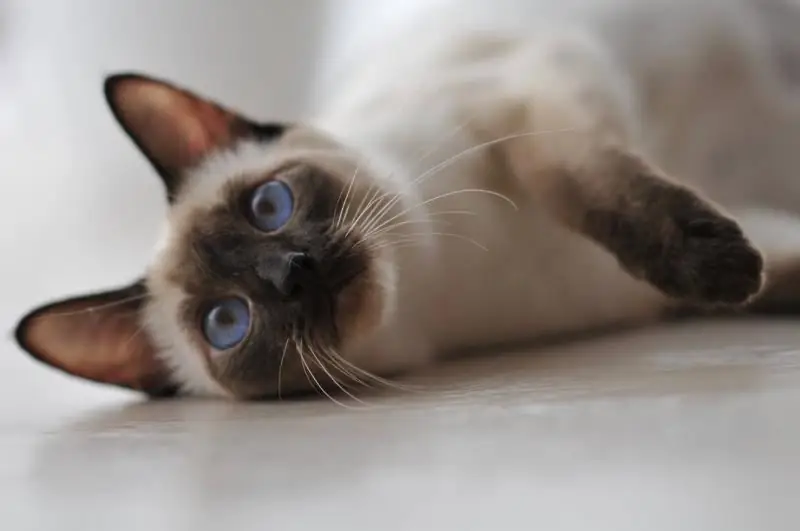
Everything you need to know a Thai cat: the history of the breed, how Thai cats differ from Siamese cats, how to care for animals and get purebred kittens
Bombay Cat: Cat Photo, Price, Breed Character, External Standards, Breeding, Kitten Selection, Owner Reviews
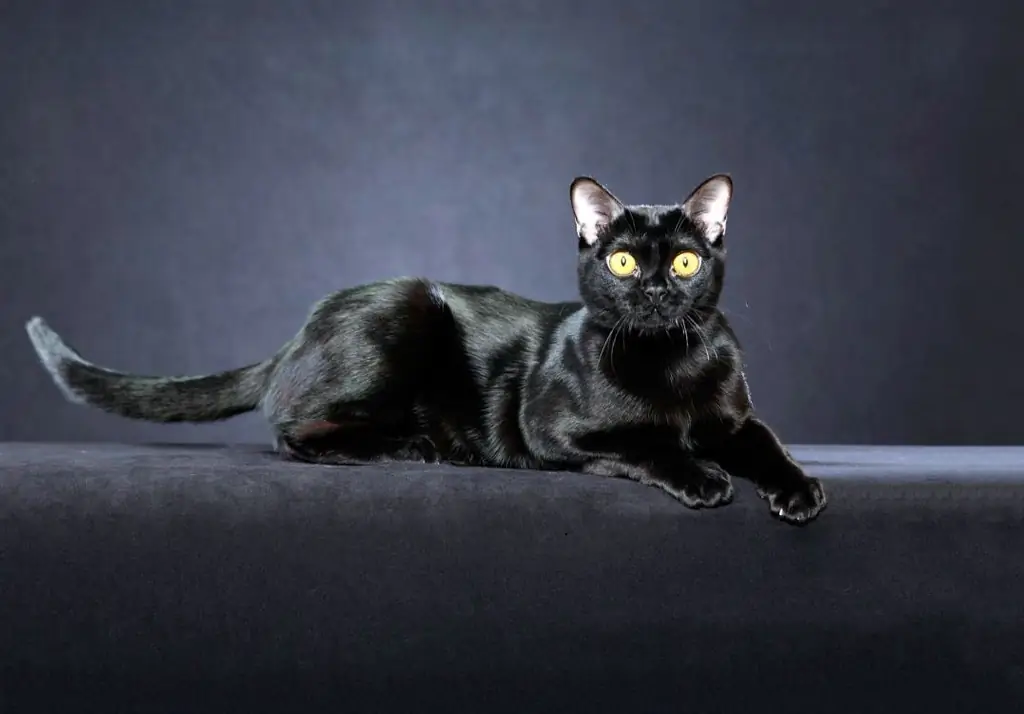
Where is the Bombay cat bred, what are the main external differences and character, how to properly care for it, feed it, how to choose a kitten of this breed
Turkish Van: Photo Of A Cat, Description Of The Breed, Character And Habits, Owner Reviews, Choice Of A Van Kitten
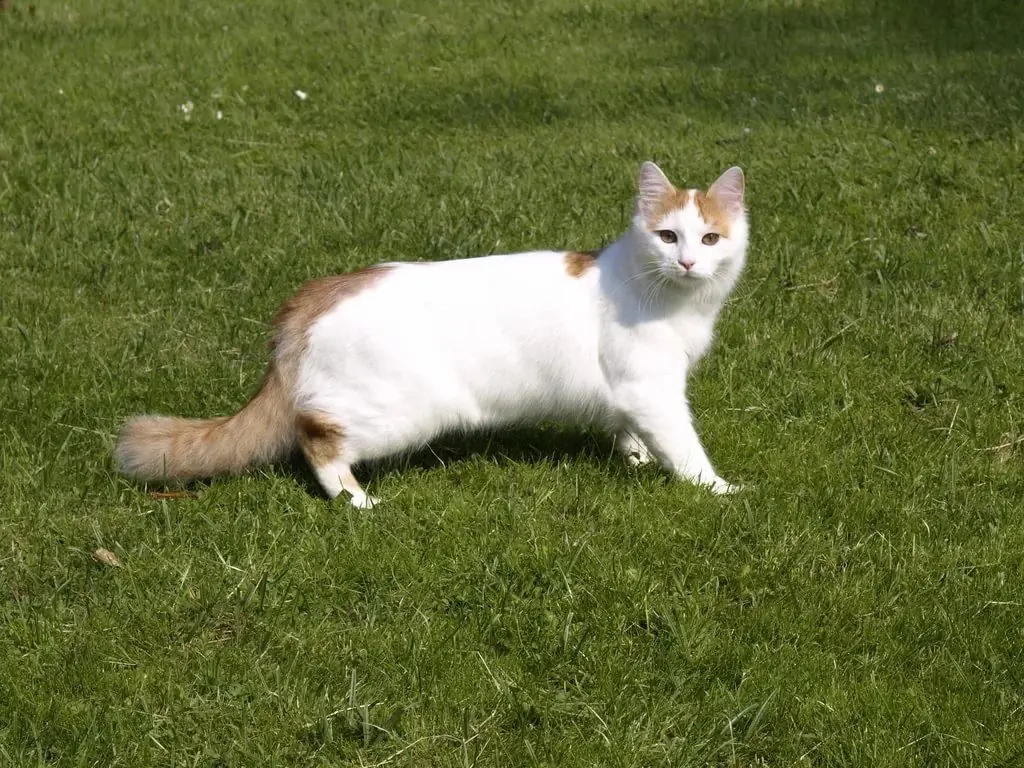
Where did the Turkish Van breed appear, what are the main external differences and character. How to properly care for the breed, how to choose a kitten. Host Reviews
Belgian (Bengal Cat): Description Of The Breed, Character And Habits, Maintenance And Care, Owner Reviews, Photos
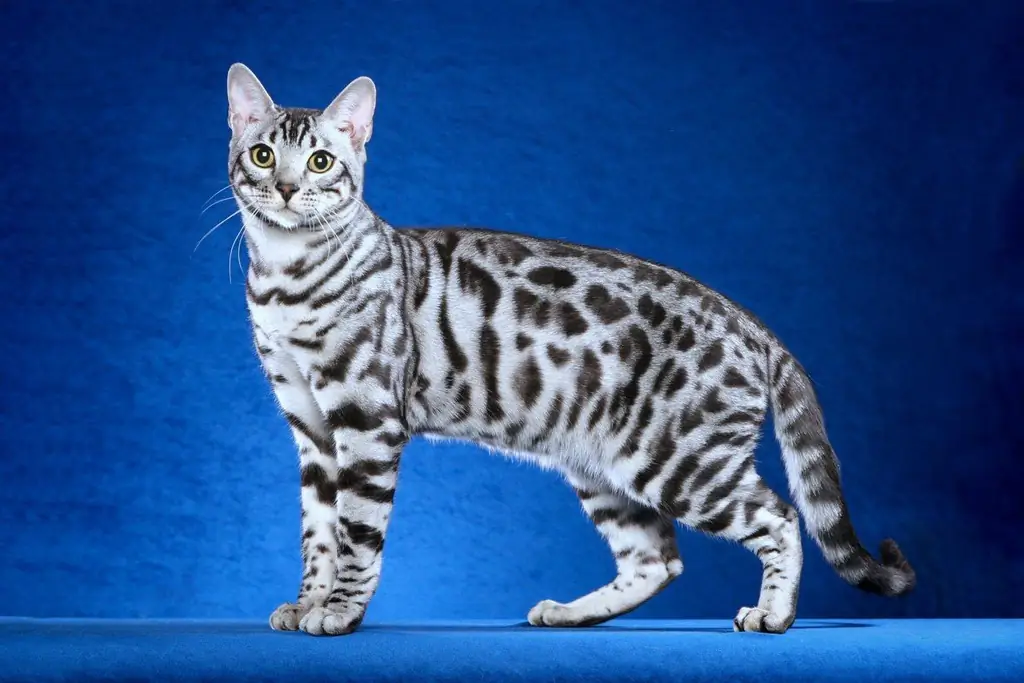
The history of the origin of the breed. The appearance of a Bengal cat. Bengal character. Health. How to take care of your pet. How to choose a kitten. Reviews
Minskin: Breed Origin, Appearance, Character And Habits, Photos, Kitten Selection, Owner Reviews
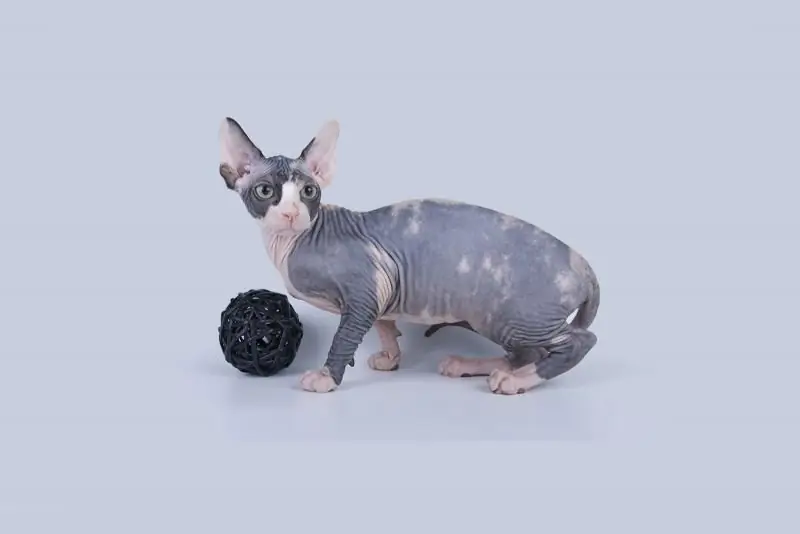
History of the origin of the breed of cats minskin. External characteristics. Features of maintenance, health and breeding. Where to buy and how to choose a kitten
